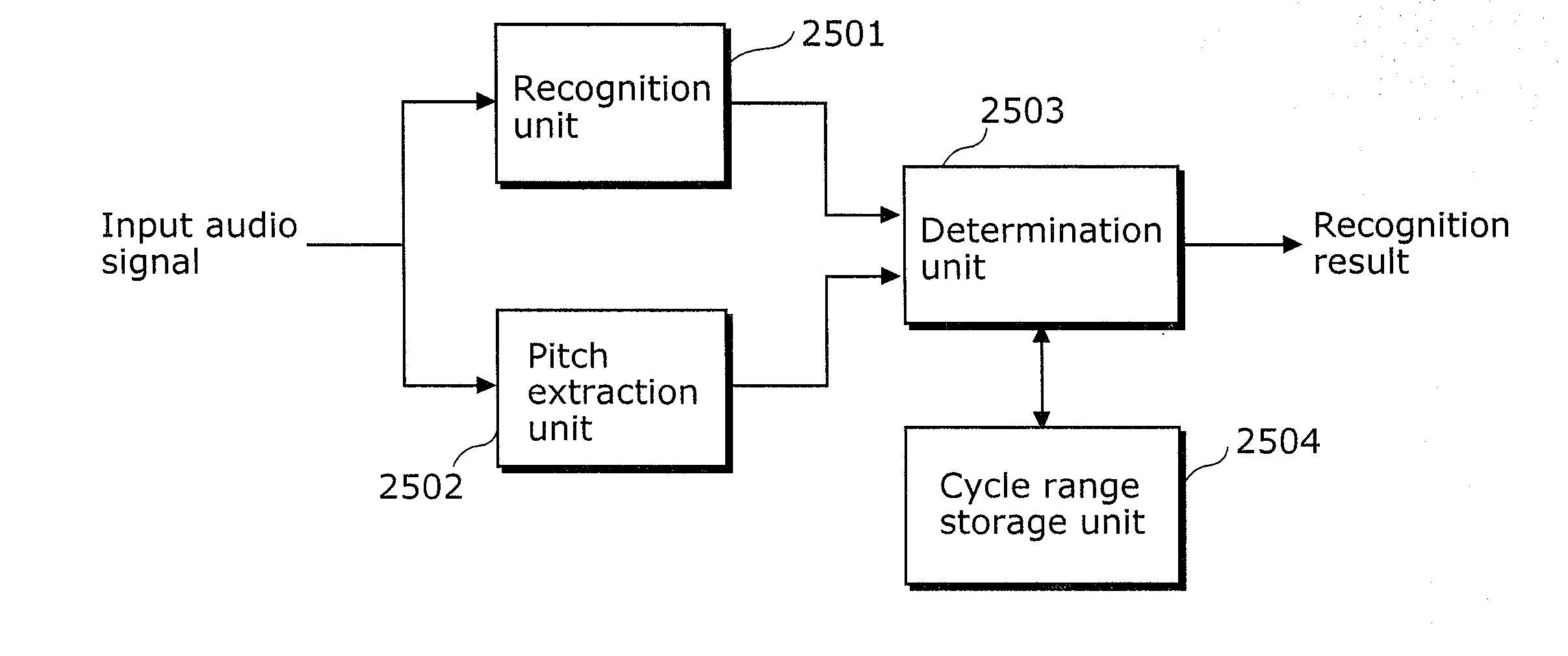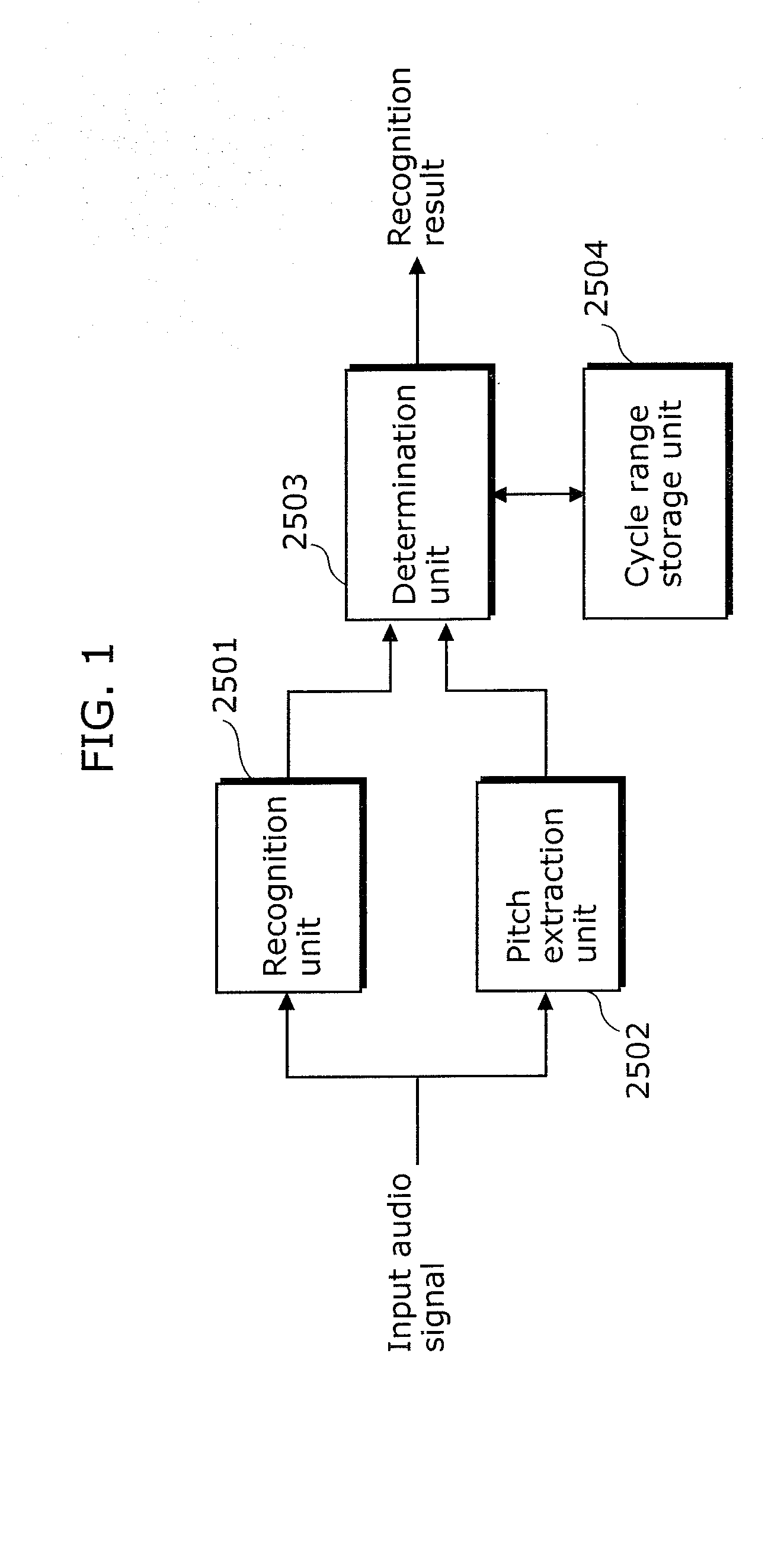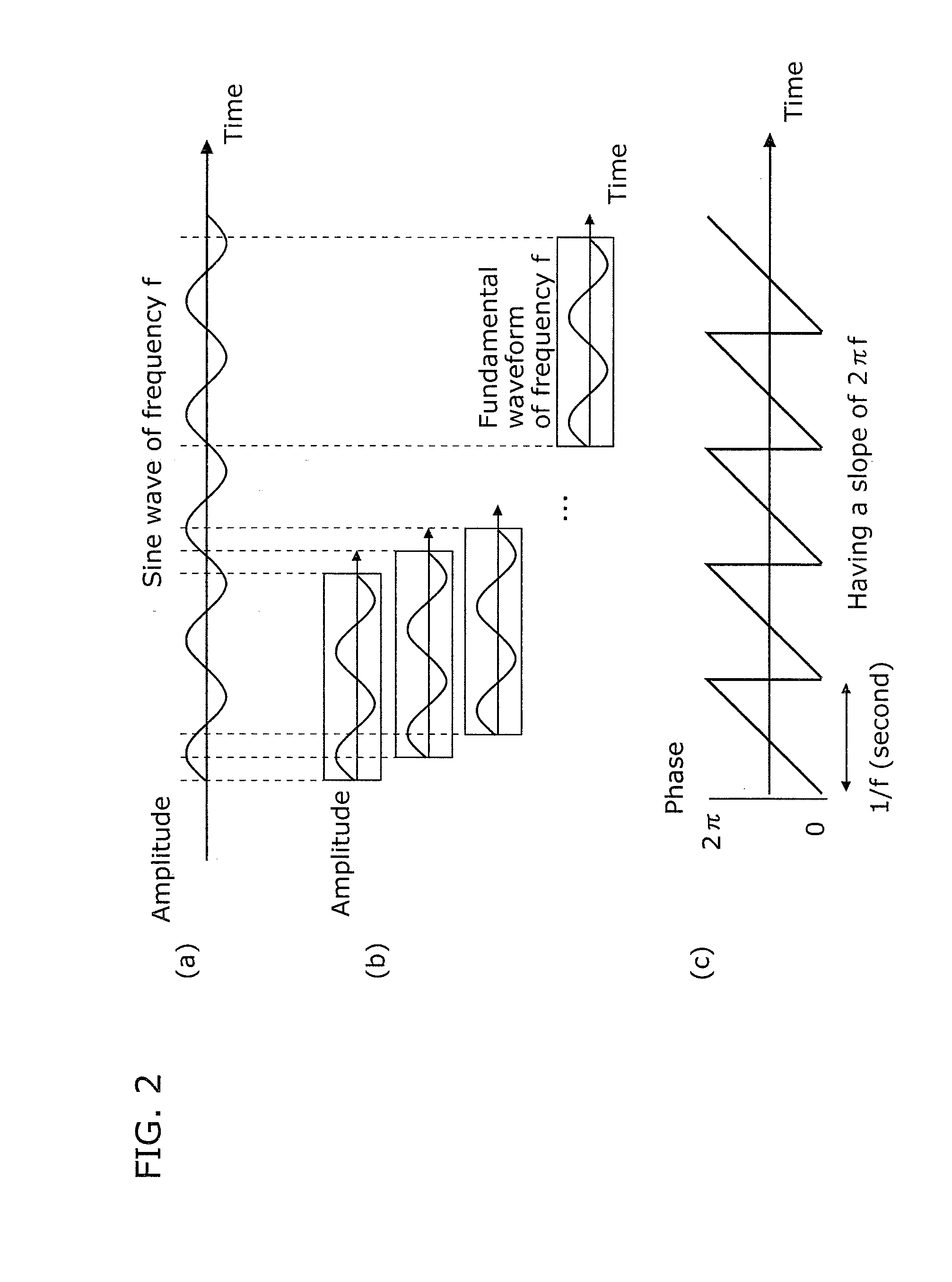Sound determination device, sound detection device, and sound determination method
a technology of detection device and sound, applied in the direction of transducer casing/cabinet/support, electrical transducer, instruments, etc., can solve the problems of the inability to apply the configuration to the technique of extracting only the to-be-extracted sound from the mixed sound, and the inability to determine the to-be-extracted sound. to achieve the effect of accurate recognition of the sound
- Summary
- Abstract
- Description
- Claims
- Application Information
AI Technical Summary
Benefits of technology
Problems solved by technology
Method used
Image
Examples
embodiment 1
Variation 2 of Embodiment 1
[0179]Next, a description is given of Variation 2 of the noise removal device shown in Embodiment 1.
[0180]The noise removal device according to Variation 2 is structurally similar to the noise removal device according to Embodiment 1 described with reference to FIGS. 6 and 7, but is different in processing performed by the noise removal processing unit 101.
[0181]The phase distance determination unit 201(j) in the to-be-extracted sound determination unit 101(j) generates a phase histogram using frequency signals at time points of a 1 / f time interval selected by the frequency signal selection unit 200(j). The phase distance determination unit 201(j) determines, to be frequency signals 2408 of a to-be-extracted sound, the frequency signals having a phase distance equal to or smaller than a second threshold value and having the number of times of appearance equal to or greater than a first threshold value.
[0182]Lastly, the sound extraction unit 202(j) removes ...
embodiment 2
[0201]Next, a noise removal device according to Embodiment 2 is described. Unlike the noise removal device according to Embodiment 1, the noise removal device according to Embodiment 2 modifies the phase ψ(t) (radian) of a frequency signal at a current time point t of a mixed sound to ψ′(t) according to the expression ψ′(t)=mod 2π(ψ(t)−2πft) (here, f denotes a reference frequency), determines a frequency signal of the to-be-extracted sound, based on the modified phase ψ′(t) of the frequency signal, and removes noises.
[0202]Each of FIG. 26 and FIG. 27 is a block diagram showing the structure of the noise removal device according to Embodiment 2 of the present invention.
[0203]In FIG. 26, the noise removal device 1500 includes: an FFT analysis unit 2402 (frequency analysis unit); and a noise removal processing unit 1504 including a phase modification unit 1501(j) (j=1 to M), a to-be-extracted sound determination unit 1502(j) (j=1 to M), and a sound extraction unit 1503(j) (j=1 to M).
[0...
embodiment 3
[0251]Next, a description is given of a vehicle detection device according to Embodiment 3. The vehicle detection device according to Embodiment 3 is intended to notify a driver of the presence of an approaching vehicle by outputting a to-be-extracted sound detection flag when it is determined that a frequency signal of an engine sound (to-be-extracted sound) is included in at least one of mixed sounds inputted through microphones. At this time, first, a reference frequency suitable for the mixed sound is determined for each time-frequency domain in advance based on an approximate straight line represented in time and phase space. Subsequently, with regard to the determined reference frequency, the phase distance is determined based on the distance between the determined straight line and the phase, thereby determining a frequency signal of an engine sound.
[0252]Each of FIG. 36 and FIG. 37 is a block diagram showing a structure of the vehicle detection device according to Embodiment...
PUM
 Login to View More
Login to View More Abstract
Description
Claims
Application Information
 Login to View More
Login to View More - R&D
- Intellectual Property
- Life Sciences
- Materials
- Tech Scout
- Unparalleled Data Quality
- Higher Quality Content
- 60% Fewer Hallucinations
Browse by: Latest US Patents, China's latest patents, Technical Efficacy Thesaurus, Application Domain, Technology Topic, Popular Technical Reports.
© 2025 PatSnap. All rights reserved.Legal|Privacy policy|Modern Slavery Act Transparency Statement|Sitemap|About US| Contact US: help@patsnap.com



